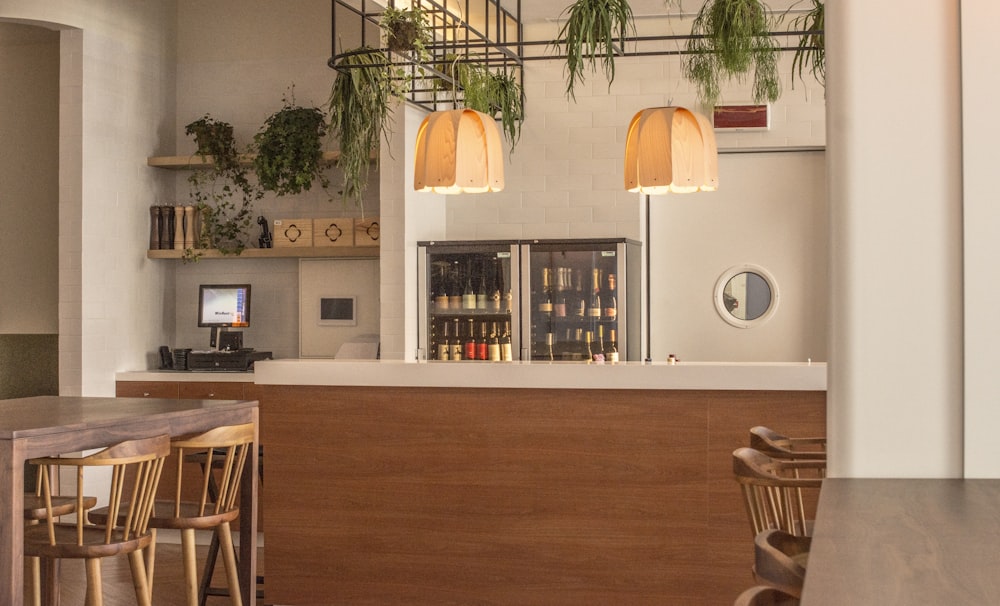Did you know that the temperature at which you store your wine can greatly affect its taste and aroma?
In fact, according to wine experts, including academics/scientists, the temperature is one of the most important factors when it comes to wine storage.
It’s not just about keeping your wine chilled; it’s about finding the right temperature that will allow your wine to age gracefully and develop its unique flavor profile.
So, what temperature should a wine fridge be set at?
The answer depends on the type of wine you are storing.
Red and white wines have different ideal temperature ranges, and it’s important to maintain a consistent temperature to preserve the quality of your wine.
In this article, we’ll discuss the ideal temperatures and conditions for storing both red and white wines, as well as tips for maintaining your wine fridge and other factors to consider when storing wine.
Whether you’re a seasoned wine collector or just starting out, understanding the importance of temperature control can help you get the most out of your wine.
Table of Contents
Storing Red Wine: Ideal Temperatures and Conditions
You’ll want to ensure your red wine is stored in optimal conditions to preserve its flavor and aroma. Red wine storage requires a consistent temperature between 55-65°F (12-18°C) to prevent it from aging prematurely. Temperatures that are too warm can cause the wine to lose its flavor and aromas, while temperatures that are too cold can cause the wine to freeze and expand, damaging the cork and causing the wine to leak out.
It’s also important to store red wine in a dark place to prevent exposure to light, which can cause the wine to become ‘light struck’ and develop an unpleasant taste.
Humidity levels should be between 50-75% to keep the cork from drying out, which can allow air to seep into the bottle and spoil the wine.
By keeping your red wine in a wine fridge or cellar that meets these ideal conditions, you’ll be able to enjoy a well-aged and flavorful wine for years to come.
Storing White Wine: Ideal Temperatures and Conditions
To keep your white wine tasting its best, you’ll want to create a cool and refreshing environment that’s similar to a chilly morning on a beach.
Unlike red wines that need to be served at room temperature, white wines need to be chilled before serving. The ideal temperature range for white wine storage is between 45°F and 55°F, which is much cooler than the standard room temperature of 70°F. By keeping your white wine at a consistent temperature within this range, you’ll be able to preserve its delicate flavors and aromas.
It’s important to note that different types of white wines may have slightly different ideal storage temperatures. For example, a crisp and light-bodied Sauvignon Blanc may benefit from being stored at a cooler temperature of around 45°F, while a fuller-bodied Chardonnay may do better at a slightly warmer temperature of around 50°F.
Be sure to check the specific recommendations for each type of white wine that you plan on storing, and adjust your wine fridge accordingly.
The Importance of Consistent Temperatures
Maintaining a consistent environment in your wine storage area is crucial, but have you ever wondered why small fluctuations in the surrounding atmosphere could be disastrous for your white wines? Temperature fluctuations, even by just a few degrees, can have a significant impact on wine aging. It can affect the wine’s flavor, aroma, and color. Inconsistent temperatures can also damage the cork, leading to oxidation and spoilage.
Here are some reasons why maintaining consistent temperatures is essential:
- Prevents premature aging
- Preserves the wine’s freshness and aroma
- Protects the wine from oxidation
- Maintains the wine’s color and appearance
- Promotes gradual and even aging
To ensure that your white wines age gracefully, it’s crucial to store them at a constant temperature. A wine fridge is the perfect solution to maintain the ideal temperature range for your white wines.
In the next section, we’ll discuss some tips on how to maintain your wine fridge to ensure that it provides optimum storage conditions for your precious collection.
Tips for Maintaining Your Wine Fridge
If you want to keep your wine in perfect condition, it’s important to take care of your wine fridge regularly. One of the most crucial things to do is to establish a cleaning schedule for your wine fridge.
Make sure to remove any debris or dust that may have accumulated on the shelves or in the corners of the fridge. It’s also important to keep the exterior of the fridge clean. Wipe it down with a damp cloth and mild detergent to prevent any dirt or grime from building up.
Proper ventilation is also key to maintaining your wine fridge. Make sure to leave enough space between the fridge and the wall to allow air to circulate. This will help regulate the temperature and prevent the fridge from working too hard.
Additionally, avoid placing the fridge near heat sources such as ovens or direct sunlight. By following these tips, you can ensure that your wine fridge is functioning optimally, which will help keep your wine at the perfect temperature.
In the next section, we’ll discuss other factors to consider when storing wine.
Other Factors to Consider When Storing Wine
You’ll want to keep an eye on the humidity levels in your wine storage area, as high humidity can cause cork damage and low humidity can cause evaporation. The ideal humidity level for wine storage is between 50-70%. To maintain this level, you can use a humidifier or dehumidifier depending on the current humidity level in your storage area.
It’s also important to avoid storing wine in areas with direct sunlight or lighting options that emit UV rays, as this can cause premature aging and spoilage of the wine. Instead, opt for low-level lighting options such as LED or incandescent bulbs.
Another factor to consider when storing wine is the vibration level in your storage area. Vibrations can disturb the sediment in the wine, affecting its quality and taste. To minimize vibrations, you can opt for a wine fridge with vibration absorption technology or store your wine bottles horizontally in a stable and secure location.
Finally, it’s important to consider the temperature consistency in your storage area. Fluctuations in temperature can cause the wine to expand and contract, leading to leaks and spoilage. A wine fridge with a temperature control feature can help maintain a consistent temperature, or you can choose a stable location in your home with minimal temperature fluctuations.
Frequently Asked Questions
Can a wine fridge be used to store other types of beverages besides wine?
Looking for beverage alternatives to store in your wine fridge? It’s possible! While wine fridges are specifically designed to store wine, they can also be used to store other types of beverages like beer, soda, and juice.
However, it’s important to note that the temperature control in a wine fridge is tailored to the specific needs of wine, so if you do decide to store other beverages, you may need to adjust the temperature settings accordingly. It’s also important to keep in mind that storing other beverages in a wine fridge may impact the flavor of your wine, so it’s best to keep them separate if possible.
Overall, a wine fridge can be a versatile addition to your home, but it’s important to consider the specific needs of your beverages and adjust accordingly.
How long can a wine fridge keep wine fresh?
You’ve invested in a wine fridge to store your precious bottles, but how long can you expect it to keep them fresh?
The lifespan of a wine fridge varies, but on average, it can last around 7-10 years with proper maintenance. However, it’s important to keep in mind that a wine fridge’s energy consumption can also affect its longevity.
To ensure your wine fridge lasts as long as possible, be sure to clean the coils regularly and keep it in a cool, dry place away from direct sunlight. With proper care, your wine fridge can keep your bottles fresh for many years to come.
Is it necessary to store wine bottles horizontally in a wine fridge?
To ensure optimal aging potential and cork moisture, it’s highly recommended to store wine bottles horizontally in a wine fridge. This is because the horizontal position keeps the cork moist, preventing it from shrinking and exposing the wine to air.
In addition, the shape of the bottle also plays a role in horizontal storage, as some bottles may be too tall or wide to fit properly. Therefore, it’s important to consider the bottle shape when choosing a wine fridge.
Overall, horizontal storage is a crucial aspect of wine preservation and should be taken into consideration for those looking to age their wine properly.
Can a wine fridge be kept in a garage or other non-temperature-controlled environment?
If you’re considering keeping a wine fridge in your garage or other non-temperature-controlled environment, it’s important to consider whether the fridge is suitable for this type of placement.
Wine fridges are designed to maintain a consistent temperature, and temperature fluctuations can negatively impact the quality of your wine.
If your garage experiences extreme temperature swings, it may not be the best place to keep your wine fridge.
However, if your garage is well-insulated and maintains a relatively stable temperature, it may be a suitable location.
It’s important to regularly monitor the temperature inside the fridge and make adjustments as needed to ensure your wine stays at the optimal temperature for storage.
Are there any specific cleaning or maintenance requirements for a wine fridge?
To keep your wine fridge in top condition, it’s important to follow proper cleaning techniques and maintenance tips.
Start by unplugging the fridge and removing all bottles and shelves. Wipe down the interior with a mixture of warm water and mild detergent, making sure to get into all the corners and crevices. Rinse with clean water and dry thoroughly before replacing the shelves and bottles.
It’s also important to regularly check the temperature and humidity levels, as well as the seals and gaskets, to ensure they’re functioning properly. If you notice any issues, address them immediately to prevent further damage.
With proper cleaning and maintenance, your wine fridge can provide years of enjoyment for your wine collection.
Conclusion
So, you’ve invested in a wine fridge and now you’re wondering what temperature to set it at.
Well, it all depends on what type of wine you plan on storing. For red wine, you’ll want to aim for a temperature between 55-65°F (12-18°C) while white wine should be kept cooler at 45-50°F (7-10°C).
But remember, consistency is key. Fluctuating temperatures can negatively impact the taste and aroma of your wine. To maintain the ideal temperature, keep your wine fridge in a cool, dry place away from direct sunlight and heat sources.
And don’t forget to regularly check the temperature and adjust as needed. By taking the time to properly store your wine, you’ll be able to enjoy a perfectly chilled glass every time.
So go ahead, pour yourself a glass and savor the flavors. Cheers to a well-stocked wine fridge!







